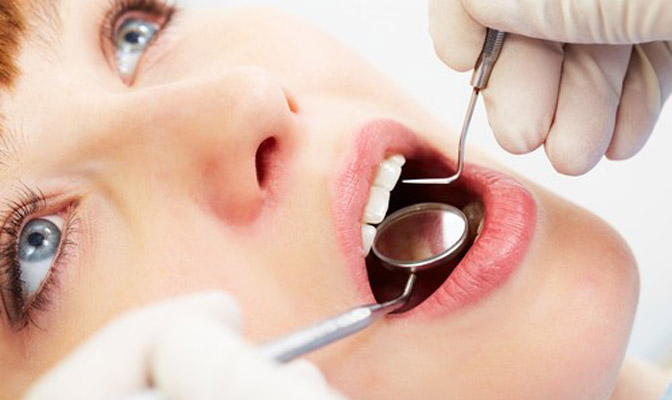Dental Exam
At your first dental visit a complete dental exam will be done by your dentist. At that time and at following regular check-up exams, your dentist and hygienist will include:
- Diagnostic x-rays (radiographs): to find decay, tumours, cysts, bone loss and tooth positions.
- Oral cancer screening: to check your face, neck, lips, tongue, throat, tissues, and gums for any signs of oral cancer.
- Gum disease evaluation: to check your gums and bone around your teeth for any signs of periodontal (gum) disease.
- Examination of tooth surfaces: to check for decay with special dental instruments.
- Examination of existing restorations: to check your fillings, crowns, veneers etc.
Professional Dental Cleaning
Professional dental cleanings (scaling, root planing and polishing) are done by Registered Dental Hygienists. Your cleaning appointment will include a dental exam by the dentist and:
- Removal of calculus (tartar): Calculus is hardened plaque that has formed on the toothand will be firmly attached. Calculus forms above and below the gum line, and can be removed with appropriate dental instruments.
- Removal of plaque: Plaque is a sticky, almost invisible film that forms on the teeth. It isa growing colony of living bacteria, food debris, and saliva. The bacteria produces toxinsthat inflame the gums. This inflammation is the start of periodontal disease and can effect your general health!
- Teeth polishing: Remove stain and plaque that is not otherwise removed during tooth brushing and scaling.
Dental scaling
Dental scaling is an effective, non-surgical way to treat gum disease, otherwise known as periodontitis. It is a relatively painless procedure in which a scaling instrument ( a scaler) is used to remove the plaque, calculus and stain from the crown and root surfaces of teeth, returning the patient to a state of periodontal health. If left untreated, inflammation caused by the bacteria in plaque and tartar build-up can cause gingivitis, and eventually periodontal disease.
In order to maintain the health of the tooth and gums, it is crucial that the patient exercises optimal oral hygiene following the procedure. Information on how to properly care for your teeth and gums can be made available through your dentist or dental hygienist.
Fluoride
Fluoride is a naturally occurring element that can be found in the water we drink and the food we eat, as well as in toothpastes and mouthwashes. When used properly, fluoride is a safe and effective way to reduce the incidences of dental caries. When absorbed by the body it is used by the cells that build your teeth and bones and helps to make the enamel stronger. When applied topically, such as in a fluoride treatment provided by your dental professional, it can strengthen the enamel, making the enamel more resistant to acid and less likely to become porous and decay. Adequate amounts of fluoride can be especially beneficial for children under the age of 6, to help prevent cavities from forming in the future.
Sealants
Sealants are thin plastic coatings, commonly applied to the chewing surfaces of the back molars, as these surfaces are at most risk of decay. Sealants create a smooth surface over the fissured areas of the teeth, providing protection from decay by keeping food particles and germs out of the grooves of the teeth. Sealants are usually clear or white in color and are not readily visible. Sealants are most effective if applied soon after the molar has erupted, usually around 6 years of age for the first molars and 12 years for the second molars. Alongside fluoride and a healthy oral hygiene regiment, sealants can help prevent cavities in the adult teeth.

